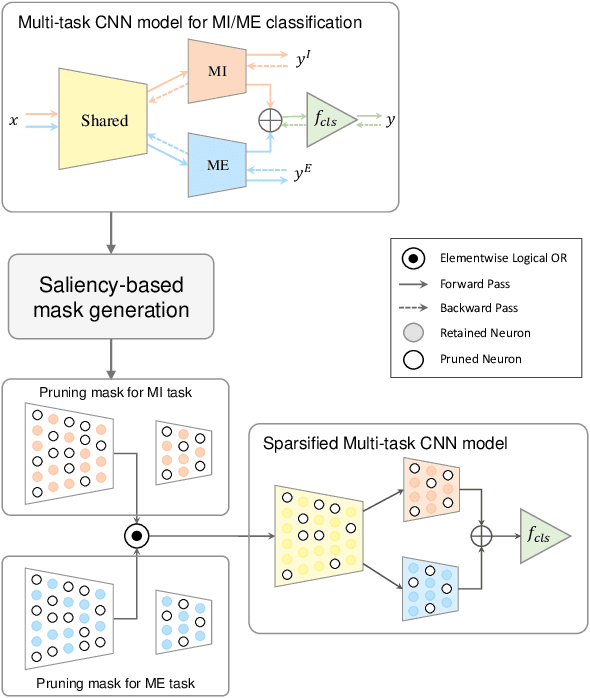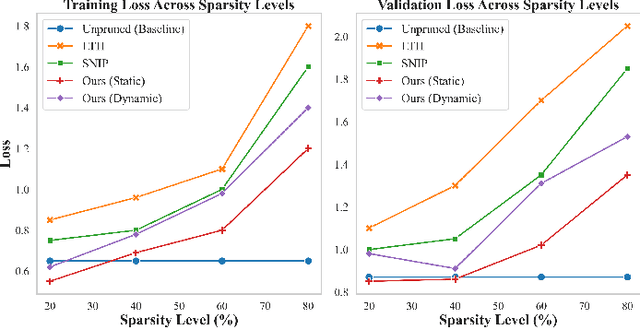Sparse Multitask Learning for Efficient Neural Representation of Motor Imagery and Execution
Paper and Code
Dec 10, 2023

In the quest for efficient neural network models for neural data interpretation and user intent classification in brain-computer interfaces (BCIs), learning meaningful sparse representations of the underlying neural subspaces is crucial. The present study introduces a sparse multitask learning framework for motor imagery (MI) and motor execution (ME) tasks, inspired by the natural partitioning of associated neural subspaces observed in the human brain. Given a dual-task CNN model for MI-ME classification, we apply a saliency-based sparsification approach to prune superfluous connections and reinforce those that show high importance in both tasks. Through our approach, we seek to elucidate the distinct and common neural ensembles associated with each task, employing principled sparsification techniques to eliminate redundant connections and boost the fidelity of neural signal decoding. Our results indicate that this tailored sparsity can mitigate the overfitting problem and improve the test performance with small amount of data, suggesting a viable path forward for computationally efficient and robust BCI systems.
 Add to Chrome
Add to Chrome Add to Firefox
Add to Firefox Add to Edge
Add to Edge